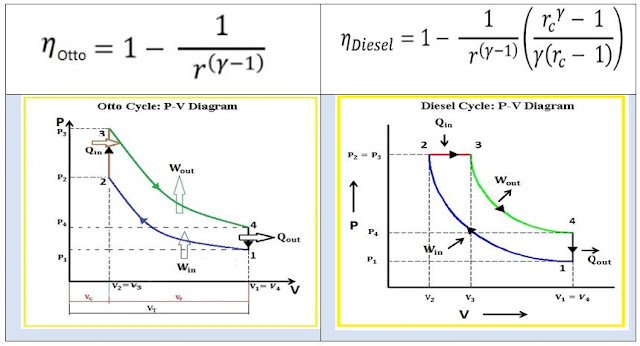SCAVENGING
(Two & Four Stroke Engines)
Scavenging is the removal of exhaust gases from an engine
cylinder.
Scavenging is the process by which exhaust gases are expelled from
the combustion chamber and fresh charge is introduced.
That is, in an internal combustion
engines, Scavenging is the process of replacing the exhaust gas in
a cylinder with the fresh air/fuel mixture (or fresh air, in the case of
direct-injection engines) for the next cycle. If scavenging is incomplete, the
remaining exhaust gases can cause improper combustion for the next cycle,
leading to reduced power output.
Efficient scavenging
is necessary for good
combustion of fuel inside the engine cylinder. The passage of scavenge air will also
assist cooling of the cylinder, piston and valves.
The three main types of scavenging for two stroke engines are UNIFLOW, CROSS FLOW and LOOP FLOW.
Scavenging is equally important for both
two-stroke and four-stroke engines. Most modern four stroke engines use CROSS-FLOW cylinder heads and valve
timing overlap to scavenge the cylinders. Modern two stroke engines use either LOOP scavenging or UNI-FLOW scavenging.
UNI-FLOW SCAVENGING is a design in which the fresh intake charge
and exhaust gases flow in the same direction. This requires that the intake and
exhaust ports be at opposite ends of the cylinder. As used by some two-stroke
engines, the fresh charge enters through piston-controlled ports near the
bottom of the cylinder and flows upward, pushing the exhaust gases out through
poppet valves located in the cylinder head.
CROSS-FLOW SCAVENGING cylinder heads are used by most modern
four-stroke engines, whereby the intake ports are located on one side of the
combustion chamber and the exhaust ports are on the other side.
LOOP SCAVENGING (also called as "Schnuerle
scavenging" or "reverse
scavenging") is a design used by most modern valveless two-stroke engines.
The key difference compared to crossflow scavenging is that the transfer ports
are located either side of the exhaust port and aimed at the opposite cylinder
wall. As the fuel/air mixture enters the combustion chamber, it
travels across the cylinder then up the cylinder wall opposite the exhaust port
before looping over at the cylinder head and back down to the exhaust port.
Scavenge efficiency can be
defined as the ratio of the volume of air in the cylinder at the start of the
compression to the volume swept by the piston from the top edge of the ports to
the top of the strokes.
Refer the following link:
Composed By:
E-Mail:
R.Satheesh, M.E., Asso Prof.,
rsatheeshemail@gmail.com.
























